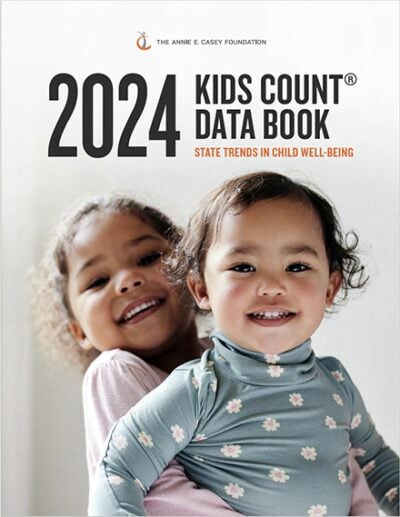
The 35th edition of the Annie E. Casey Foundation's KIDS COUNT® Data Book examines the unprecedented declines in student math and reading proficiency brought on by the COVID-19 pandemic's effect on education. The latest data from the National Assessment of Educational Progress reveals that between 2019 and 2022, fourth-grade reading and eighth-grade math scores plummeted, representing decades of lost progress. This alarming trend underscores the urgent need for action to address the growing academic disparities among U.S. students.
Today's students, who will comprise America's future workforce, are ill-prepared for the high-level reading, math and problem-solving skills required in a competitive global economy. The failure to adequately prepare our children will have dire consequences for their futures and for the economic vitality of our nation.
Learn more about pandemic learning loss and Casey's recommendations to ensure student success
In 2022, as COVID-19 restrictions eased, the impact of the pandemic on child well-being became evident. Six indicators worsened between 2019 and 2022, including educational achievement and the child and teen death rate. Between 2019 and 2021, the percentage of children scoring proficient or above in reading and math declined sharply. While this trend may have stabilized in 2022, the data indicate a significant setback in educational attainment. The child and teen death rate also remained elevated in 2022, with 17.0 deaths per 100,000 children and adolescents, compared to 14.7 in 2019.
However, some positive trends emerged:
Positive trends were also observed in the family and community domains. Fewer children lived with parents lacking a high school diploma, and the number of children living in high-poverty communities decreased. The teen birth rate reached a record low in 2021 and remained stable in 2022 at 14 births per 1,000 teen females.
These positive changes demonstrate how effective policies that address the root causes of challenges can contribute to significant improvements and create a brighter future for young people.
Racial inequities in America persist, with American Indian/Alaska Native, Black and Latino children facing significant disparities. Nearly all well-being indicators show disparate outcomes by race and ethnicity, with American Indian/Alaska Native children and Black children experiencing the lowest well-being levels.
Generations of inequity and discrimination contribute to these disparities. Black children have higher rates of single-parent households and poverty, while American Indian/Alaska Native children are more likely to lack health insurance and live in resource-limited neighborhoods. Latino children have higher rates of obesity and live in households where the head may lack a high school diploma.
And despite overall better outcomes for Asian and Pacific Islander children, disaggregated data reveal significant disparities within this population. Burmese, Mongolian and Thai children experience higher rates of poverty and lack of high school diplomas in their households. Today, children of color constitute the majority of the nation's children, highlighting the importance of ensuring their success for the future of America.
View the national data profile or download your state's data profile as a PDF below:
View the 2024 national data profile in Spanish or download your state's data profile as a PDF below:
The Foundation calculates a composite index of overall child well-being for each state by combining data across four domains: (1) Economic Well-Being, (2) Education, (3) Health and (4) Family and Community. These scores are then translated into state rankings. Explore overall child well-being in the interactive KIDS COUNT Data Book.
To help children grow into prepared, productive adults, parents need jobs with family-sustaining pay, affordable housing and the ability to invest in their children’s future. Explore economic well-being in the interactive KIDS COUNT Data Book.
The early years of a child’s life lay the foundation for lifelong success. Establishing the conditions that promote educational achievement for children is critical. Explore educational well-being in the interactive KIDS COUNT Data Book.
Children’s good health is fundamental to their overall development, and ensuring kids are born healthy is the first step toward improving their life chances. Poor health in childhood affects other critical aspects of children’s lives, such as school readiness and attendance, and can have lasting consequences on their future health and well-being. Explore health indicators in the interactive KIDS COUNT Data Book.
Children who live in nurturing families and supportive communities have stronger personal connections and higher academic achievement. Explore familial and community well-being in the interactive KIDS COUNT Data Book.